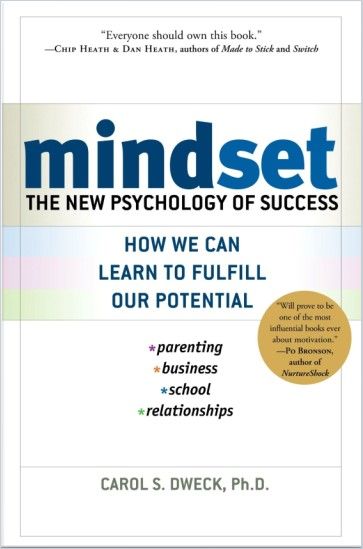“The Growth Mind-Set Is Almost a Ticket to Entry to Becoming an Effective Learner”

Matt, at McKinsey, you took a hard look at what it takes to become an intentional learner – and that this gives leaders enormous advantages when it comes to keeping up with constant change. With all the buzzwords being thrown around about cultivating curiosity and developing learning mind-sets, what sets your approach apart from the others?
Matthew Smith: I’ll start by taking a little bit of a step back into how we came to this concept of intentional learning. The idea came from looking at many of our clients and the organizations that we were working with. While the vast majority of them recognized that they had some work to do on capability building and some skill gaps they wanted to close, we observed that it’s one thing for them to know that intellectually but it’s another thing to put it into practice.
So it’s not so much the concept, but the execution?
That’s right. So, we started drilling into what is behind this. We asked: Where do the current capability-building programs or transformation programs fail? One big issue is that we tell people they need to develop entirely new skills, but that’s quite hard for most of us. People who have had successful careers may not have necessarily built the habits of learning new skills, which is critical given how quickly many companies are transforming. We started trying to go upstream from that challenge and say: What are some things that people do who can learn new skills? How do they think about learning? What do they do? This is very much the standing-on-the-shoulders-of-giants type of work that we did: We drew on a few different lines of research, some of which have been around for decades, to try to synthesize a framework for what the most effective learners actually do. As we surveyed the literature and looked at our own experience and our clients’ experience, the thread running through all of it is this concept of intentionality. Or, looking for opportunities to learn and being intentional about learning from the opportunities that present themselves to us day-to-day.
And yes, there are a set of mind-sets that go with that. And yes, there are a set of practices.
Matthew Smith
So, before we take an in-depth look, let’s get this straight: Each of us can become an intentional learner? Even those who think they are already – but aren’t?
Yes, absolutely. A mentor of mine once told me: Every company, if you ask them, “Are you customer-focused?” will say, “Yes, of course we’re customer-focused.” But then you start asking them about some of their practices, like, OK, so how quickly does someone meet a customer when they join the company? And in one place, it might be five minutes into their orientation, another place it might be six months later, and that’s where you see the differentiation. So, yes, we can all say, “Of course, I’m a good learner. I’m a fast learner. I’m a lifelong learner. I care about it.” Those are all labels that we can put on ourselves or others. But, let’s go one level down and ask: How do you approach learning in your day-to-day? What skills do your people have when it comes to, as I call it, getting the most juice from the squeeze from all the learning opportunities that we are presented with every day?
You identified two critical mind-sets and five core practices that help people on their way to becoming intentional learners. Let’s go through them one by one. Can you give me the elevator pitch when it comes to the mind-sets, please?
Sure. At the core of our framework, we identified two underlying mind-sets that effective, intentional learners have and then five habits or practices they use on a day-to-day basis. The first is a growth mind-set, and this idea comes out of Carol Dweck’s and others’ work who looked into this idea: On any given topic, do I feel that this is an area in which I can grow and get better? Or is this an area where I think that my abilities are more or less at the level that they’re going to be and will not change? That is a growth versus a fixed mind-set. And you can apply this to any domain in your life: How good of a driver you are, how fast of a reader you are, how good you are at public speaking. Do I have more of a growth or a fixed mind-set towards this? We found that the growth mind-set is almost a ticket to entry to becoming an effective learner because, at its heart, it’s the belief that I can get better at something. That it’s worth investing in my learning because I can grow.
And if you are too fixed in your view of your skills?
Then it’s very unlikely that you’re going to invest the intentional energy in getting better. That leads us to the second fundamental mind-set: A mind-set of curiosity. Some folks have explored the concept of curiosity. There’s a great book called The Curious Advantage, written by a friend of mine, Simon Brown, and his co-authors, who looked at this topic of curiosity and organizations in-depth. Curiosity is important because, if the growth mind-set is the entry ticket, curiosity is the desire to actually walk through the door. Curiosity is the fuel that powers your learning. It’s the desire to want to know more about something. That’s why intentional learners tend to bring curiosity into many more moments of their lives than maybe the rest of us do. They wonder what they can learn from this, how this works, what other people are thinking right now, or how someone with this perspective would look at that question. Curious people tend to ask more of these types of questions and thus uncover more opportunities to learn as they go through their life.
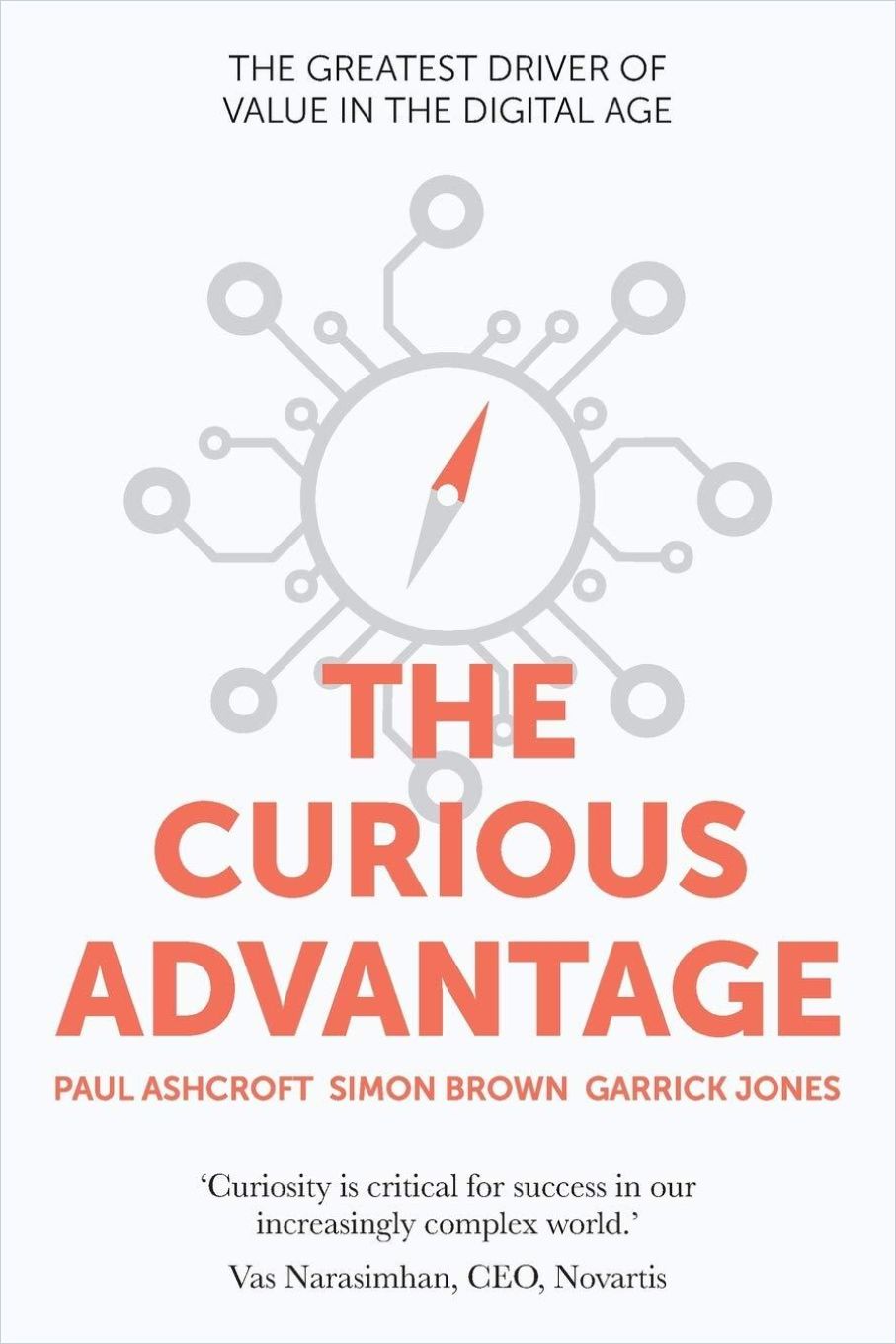
And most of the time, they don’t even recognize this. So, if you’re an intentional learner, this is not something you have to remind yourself of all the time?
Right. A question that comes up a lot is, well, are some people just curious and other people aren’t? The answer is: No. You can increase your curiosity. In essence, you can apply a growth mind-set to the idea of curiosity. It’s a muscle that you can work on. Some people come to it very naturally, but others can cultivate it. Simple practices can help: Walk down the street and be curious about what’s happening around you, and you’ll find that many new questions come up as you do that. And, of course, it’s the same in the workplace.
So, let’s come to terms with the five core skills or practices of effective learners you identified.
The first is setting small, clear goals. We all have lots of different types of goals and plans. But I’m talking specifically about goals for learning: What are the specific things that I want to learn that are important to me? Goals that matter and that are concrete enough that I know whether I’m making progress or not. It’s a bit like the old psychological concept of when someone says, “Think of the color red and now look around the room,” and you’ll start seeing every red object. If you set that goal for yourself, you’ll start seeing more opportunities to learn. And when it comes to the time frame to reach these goals, we think of it usually in a relatively defined period, about three months.
What helps in achieving these goals?
Practice number two: Remove distractions. I’m sitting here at my office at home, and I’ve got an iPad to my left, my mobile right next to it. I’ve got the computer that I’m talking on, and I’ve got another phone over here, to my right. This is the life that we all have. And most of us have a calendar packed with Zoom meetings or calls. And the distractions that come with these tools are the biggest enemy of learning that we see, particularly for professionals. That’s why intentional learners seek to remove distractions to learning.
We can all start by shutting off unnecessary notifications, and figuring out what’s going to get in your way of bringing focus to a task.
Matthew Smith
When I give talks on this, I often start with a question to the audience: What do you want to learn from the session? It’s about setting that clear goal, bringing attention to it, what’s going to get in the way, and what you will do about that. Of course, many people say, “I’m going to turn off my email while we’re going to have this conversation.” But for other people, removing distractions might mean they have a calendar that gets full of meetings, and they better set a four-hour block. Because from what I’m learning at this point, I need an uninterrupted chunk of time over the course of each week or every two weeks where I’m going to focus on that work.
I had a conversation with Cal Newport recently, and he recommended having two hours in the morning and two hours in the afternoon where you just shut down all your devices and do your deep work – and learning often is deep work.
Cal is one of the most thoughtful writers on this topic, and of course, you do need to set aside the necessary time for certain types of work. The other element of removing distractions is that a lot of learning happens in the arena. It’s in the flow of what we’re doing. So, in addition to keeping your schedule from getting too packed, you should try to absorb as much learning as possible when you’re sitting in a meeting or when having a conversation with someone.
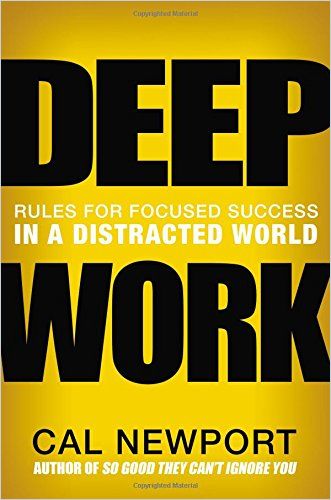
That’s where the topic of feedback comes into play.
I think most of us know that feedback is vital to growing as professionals. What we see, though, is the difference between the best learners and those who are just OK. The latter probably asks their boss or their manager for feedback from time to time.
What intentional learners do is actively and proactively seek out feedback from many people around them and encourage people to give them specific feedback to advance their goals.
Matthew Smith
Let me illustrate this by example: Let’s say I want to give more effective presentations. The average practice might be I set up feedback with my boss once a month or once every couple of months. And when I sit down with my boss or my manager, and they don’t mention something about my presentation skills, maybe I then prompt them with an: “Oh, by the way, I’m working on this, you know….” And that person is trying to think back to presentations I may have given six weeks earlier, and they don’t remember. They won’t give me helpful feedback.
What should I do instead?
The advanced practice looks more like turning to a colleague before you go to a meeting together and say, “Hey, just as a reminder, I’m working on my presentations. And in particular, I want to practice the following two or three things in this meeting. Could you keep an eye out for that? And I’d love to get back to you after the meeting.” We then have the meeting, and my colleague is trying to observe what would be helpful for me. And then, after the meeting, we have a three-to-five-minute conversation where the colleague says: “Hey, I noticed the following things worked well. But this one thing didn’t land so well with the group. And I wonder if maybe you could think about this next time.” This is not a whole long and formal process. It’s accessible. It’s in the moment. It’s much more linked to my goals. It’s the kind of actionable feedback that the best learners tend to seek out in their day-to-day experiences. And that’s why actively seeking feedback is such an important habit to cultivate.
Combining the first three practices in an easy-to-remember formula you promote: “3x3x3” – “Three goals, three months, three buddies.” It sounds pretty actionable, but what do I do if I am already swamped with work, and my colleagues are, too? How do we, as a team, cultivate the practice?
The good news is: It’s less work than you think as long as you bring the proper intentional focus to it. And it’s not hard to create a dynamic or a culture within teams, where people support each other in this way on an ongoing basis. 3x3x3 is a heuristic or a nice, easy way that we’ve created to remember how to put this in practice. Some people ask me, well, does it have to be precisely three goals now? No. Does it have to be exactly three months? No. It’s just about the right time frame where you might decide to keep up one of the goals again for another three months – more of a clearly defined checkpoint. And then, enlist other people in your learning because we all have blind spots, especially when we’re in the arena doing our work.
So, who should those people be? People I look up to when it comes to a certain quality?
It depends a lot on the goals that you’ve set. Most typically, I say look around to the people who you work with most and have the most exposure to what you are trying to work on. It does not matter whether they are senior people or peers, or people who report to you, maybe people that you’re on cross-functional teams with, or only doing some collaboration with. The key is that they are relevant people for the goals you’re trying to work on. My wife cares a lot about me, and she cares a lot about my learning, but she doesn’t see me in the context of giving presentations, or she doesn’t see me in the context of applying more advanced analytics – so she might not be the right person to enlist in that goal. Instead, think about who the people are that see you enough and who have enough exposure to you over this period to give you helpful tips and actionable feedback. It can come from any part of the organization if you have enough exposure.
And practice number four?
Practice number four is the practice of practice. It’s the idea of practicing the skills that you’re trying to work on. But it is important to know that there are more and less effective practices, as anyone who plays a sport or tries to learn a musical instrument knows. The type of practice that I focus on here is deliberate practice, which is, again, a concept from a whole vein of research and literature. Anders Ericsson, I would say, is my go-to author and guru on this topic. He wrote a great book called Peak, which sort of summarizes his broader work on deliberate practice.
The key to deliberate practice is a focus on particular pieces of the broader goal. You drill down on one piece at a time, and you try to get reps, when you do it repeatedly, and you get feedback on it and work that until it feels pretty good.
Matthew Smith
And then you pick either a slightly harder or different chunk to work out. Very few of us do deliberate practice in a professional setting because it’s hard and takes real focus and effort.
Can you give an example?
Well, I’m learning how to play piano these days. As an adult. (Laughs.) It’s tough. And my teacher always tells me: “You have work on a couple of bars at a time until it’s right. This will not be as fun as playing through the whole piece, but you’ll learn the piece much faster that way.” And it’s true. Deliberate practice in areas that you want to grow in means focusing on those small chunks – and again, involving other people so they can give feedback so that you can get better. And finally, the fifth habit or practice is regular reflection. It’s crucial to embed learning – and almost embody it – to carry it forward and not have to be as consciously focused on it.
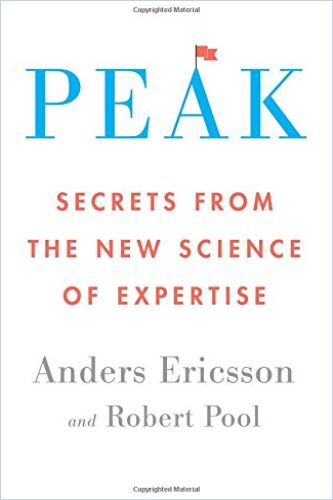
But reflection happens at multiple different levels. How can you incorporate it when you’re in the middle of things?
I like to start with the ground level, so to speak, which is when I am in a meeting or interacting. Can I reflect on what’s happening in this meeting and what I’m learning even as it’s happening? Can I be on the dance floor and the balcony at the same time? The idea came out of the work by Ron Heifetz and Marty Linsky many years ago, and it’s been carried forward by others. How can I be dancing, but at the same time taking an aerial view to see what’s happening here? What are the dynamics? What can I take away from this? Many people also benefit from some mindfulness practice to regularly step back and learn to train their minds to focus. They are on one topic and decide where they want to put their focus next. I think it’s important, too, to reflect on what you learned. Reflection is almost a digestion of learning that’s happening on an ongoing basis. Those are the five core practices that we see to intentional learners put in place on a regular basis.
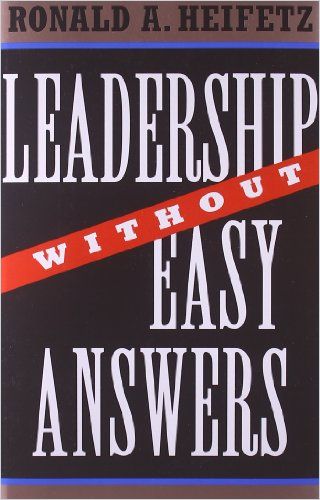
According to your research, what are the biggest obstacles to building the organizational ecosystem that empowers people to incorporate these practices and mind-sets into their workflow?
That’s a good-news-bad-news story. And the good news is that none of what we’ve talked about today takes up a tremendous amount of time on your calendar. We’re not talking about “You’ve got to send people away for five more days a year to formal learning programs” or things like that. These are all practices and approaches that you bring to a typical workday. The bad news is, as you were saying, is that organizational cultures can be more or less accepting or appreciative of the efforts that people put in to advance their learning.
What role do the CEOs and managers play?
A crucial one. There are some great and well-known examples of companies where the CEOs talked publicly about the importance of learning and creating a culture of learners. Microsoft has done this over the past years. Novartis is another company that’s putting a lot of emphasis on learning. When leaders create this climate, employees do not feel that they need permission to advance their skills because these companies create a natural environment in which more and more people want to try some of these things out and are open to talk about their questions or their progress with others.
That is where the magic really happens because the outcome multiplies: When teams start learning intentionally and together.
Matthew Smith
Someone simply has to start the conversation, and if the CEO does it: great! But any one of us can begin to implement more and more of these practices for ourselves.
What are the “system requirements” to spark this change?
I think you need to have enough psychological safety and space on teams to have those kinds of discussions for this to come out. Because for some of us, it still is a sign of vulnerability to talk about the things that we don’t know or where we want to get better. You need to have an environment where you can speak openly about what you work on and what you want to get better at – and how you get the help you need from people around you.
How can L&D professionals support this environment?
There is a shift that needs to be made from content production and curation to how to help people build the skills and desire to learn on their own. And then to offer the necessary resources that they can take advantage of in their unique way. As an L&D professional, you must ask yourself: How do I create a culture of learners? How do I create a culture of teachers? How do I build the skills in my workforce so that people can learn on their own?
I don’t think that L&D is out of a job if they shift from producer to enabler. On the contrary, they have a new job: Cultivate the skills of effective learning, and then find the right resources that will support the skills that employees need, make them available and easy to navigate for people.
Matthew Smith
It’s still about creating and cultivating learning ecosystems, but with this trend, in a sense, the monkey is coming off L&D’s back and individuals are taking much more control.
About the Author
Matthew Smith is a leadership coach and former chief learning officer at McKinsey & Co. in Paris. Recently, he founded Smith Executive Coaching, his leadership advisory firm.

